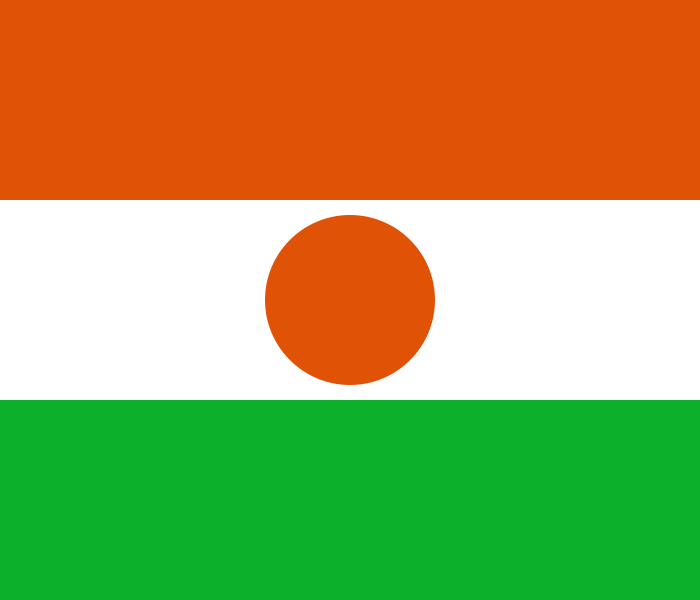 Niger (pronounced /ˈnaɪdʒər/ or /niːˈʒɛər/; French pronunciation: [niʒɛʁ]), officially named the Republic of Niger, is a landlocked country in Western Africa, named after the Niger River.
Niger (pronounced /ˈnaɪdʒər/ or /niːˈʒɛər/; French pronunciation: [niʒɛʁ]), officially named the Republic of Niger, is a landlocked country in Western Africa, named after the Niger River.
It borders Nigeria and Benin to the south, Burkina Faso and Mali to the west, Algeria and Libya to the north and Chad to the east.
Niger covers a land area of almost 1,270,000 km2, over 80 percent of which is covered by the Sahara desert.
The country’s predominantly Islamic population of just above 15,000,000 is mostly clustered in the far south and west of the nation. The capital city is Niamey.
Niger is a developing country. Much of the non-desert portions of the country are threatened by periodic drought and desertification. The economy is concentrated around subsistence and some export agriculture clustered in the more fertile south, and the export of raw materials—especially uranium ore.
Niger remains handicapped by its landlocked position, desert terrain, poor education and poverty of its people, lack of infrastructure, poor health care, and environmental degradation.
Nigerien society reflects a great diversity drawn from the long independent histories of its several ethnic groups and regions and their relatively short period living in a single state. Historically, what is now Niger has been on the fringes of several large states.
Since independence, Nigeriens have lived under five constitutions and three periods of military rule. A majority live in rural areas, and have little access to advanced education.

Notes from Wikipedia








